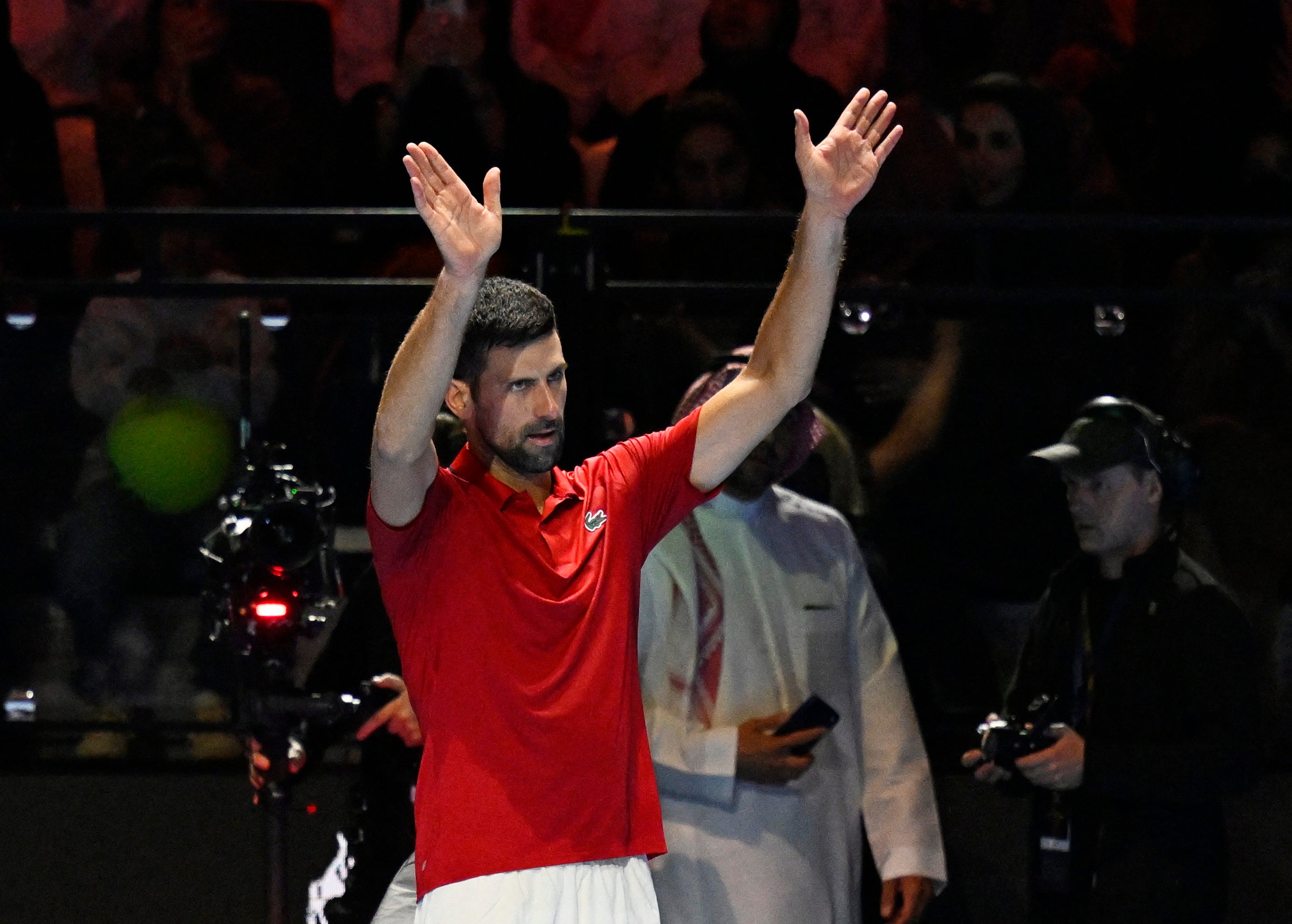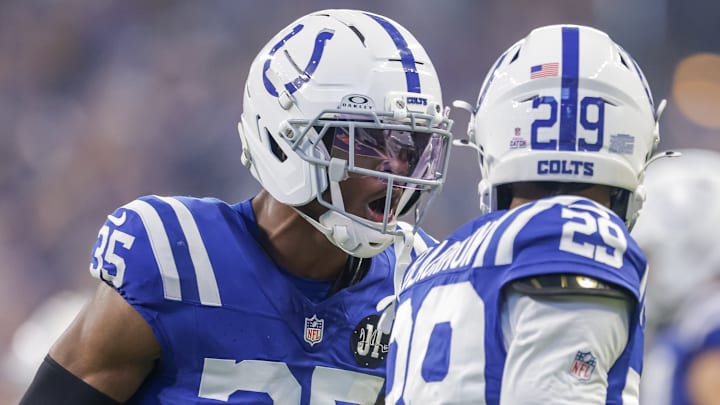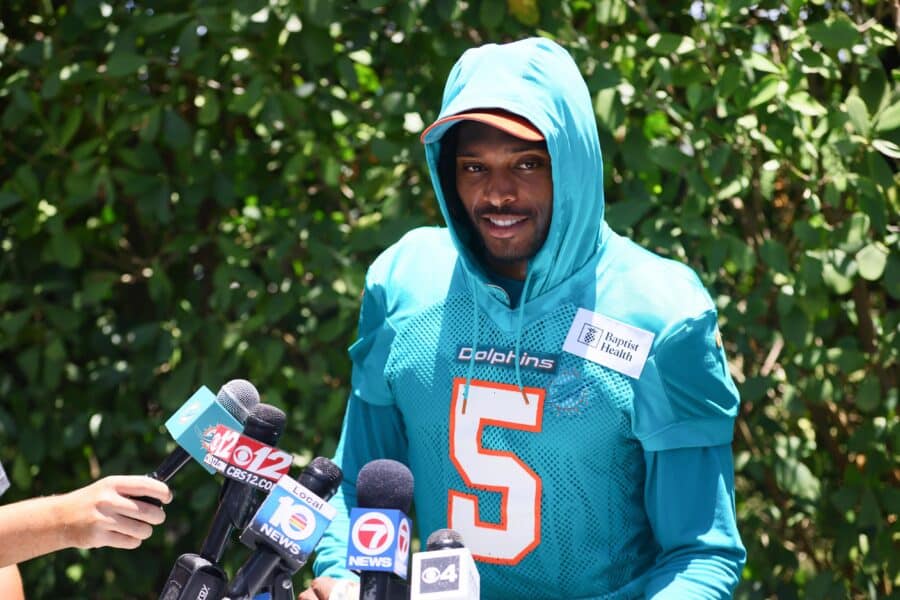Novak Djokovic Calls It Quits Mid-Match Against Fritz at Six Kings Slam
Well, well, well. Just when you thought you’d seen everything in tennis, Novak Djokovic goes ahead and pulls the ultimate plot twist at the Six Kings Slam in Saudi Arabia. The 24-time Grand Slam champion decided he’d had enough after losing the first set to Taylor Fritz 7-6, throwing in the towel faster than a frustrated gamer rage-quitting their favorite title.

And honestly? The whole thing left more questions than answers, proving once again that tennis can be as unpredictable as a bad internet connection during a crucial online match.
The Marathon Set That Broke Djokovic’s Spirit
Let’s talk about that first set, because calling it epic would be like calling the ocean “a bit wet.” For 75 grueling minutes, these two tennis gladiators went at it like they were fighting for the last slice of pizza at a LAN party. Djokovic, being the stubborn competitor he is, saved nine break points – NINE! – while Fritz was probably wondering if this match would ever end.
The Serbian legend had four set points in the tenth game, which should have been game over. But Fritz, channeling his inner clutch player, somehow managed to survive and force a tiebreak. It’s the kind of resilience that would make any gamer proud, except this wasn’t happening behind a screen – this was real life, with real consequences and very real exhaustion.
When the dust settled on that tiebreak, Fritz emerged victorious 7-4, and Djokovic looked like he’d just completed a 12-hour raid without any energy drinks. The man who’s built a career on outlasting opponents had finally met his match – not in skill, but in sheer physical endurance.
Djokovic’s Apology Tour Begins
After retiring from the match, Djokovic did what any decent person would do – he grabbed the microphone and started apologizing like he’d accidentally deleted someone’s game save file. “I want to apologise to everybody, sorry guys, I’m sorry you couldn’t see the second set,” he told the Saudi Arabian crowd, sounding genuinely remorseful.
But here’s where it gets interesting (and slightly sarcastic): Djokovic called it “one of the longest sets I’ve ever played, to be honest.” Really, Novak? In a career spanning over two decades, filled with five-set marathons at Grand Slams, THIS was one of your longest sets? Either Father Time is catching up faster than we thought, or those Saudi Arabian courts have some magical time-dilating properties.
The 37-year-old also teased a potential return next year, saying “hopefully, if I keep on going next year, I’ll be back, if you guys want me here.” It’s the kind of statement that makes you wonder if he’s already mentally checking out of competitive tennis, or if he’s just being diplomatic after disappointing a crowd that probably paid premium prices to see him play.
Fritz’s Moment in the Spotlight
Give credit where credit’s due – Taylor Fritz handled the situation with more class than most online competitors handle defeat. The American, who secured third place by default, acknowledged the brutal nature of their encounter: “That was really physical. What happens is you get into those really long games and the ball starts to wear out and get so huge, to the point where it’s so hard to get a free point on the serve.”
Fritz’s explanation painted a picture of tennis at its most grinding – like playing a strategy game where every move takes forever to execute, and the difficulty keeps ramping up. He described the conditions getting “so slow” that they were “playing long rallies, back-to-back-to-back, just fighting for every point.”
When asked about facing Djokovic, Fritz showed the kind of respect that’s becoming rarer in competitive sports: “It’s amazing. It’s crazy, all these guys that I grew up watching dominate tennis, and I get to play with them.” Sure, Djokovic had been “beating me for a very long time, probably at least the last eight years,” but Fritz still called it “a pleasure to share the court with the best players of all time.”
The Physical Reality Check
Let’s be real here – watching a tennis legend retire mid-match isn’t exactly what fans signed up for. The Netflix commentators were “gobsmacked” (their word, not mine), calling it “surprising” to see the 37-year-old just walk away. But maybe that’s the point we’re missing.
Djokovic has been dealing with ongoing physical issues, something he mentioned when explaining his need to “address the physical issues he’s been having and hopefully playing the last couple of tournaments of the season.” It’s a stark reminder that even the greatest athletes are human, not invincible gaming characters with infinite health bars.
The retirement also raises questions about Djokovic’s future. Is this the beginning of the end for one of tennis’s greatest competitors? Or is he just being smart about picking his battles as he approaches the twilight of his career?
What This Means for Tennis Moving Forward
Here’s the thing about Djokovic’s retirement that nobody wants to talk about: it’s probably the smart move. In an era where younger players like Carlos Alcaraz and Jannik Sinner are breathing down everyone’s necks, maybe the old guard needs to start choosing their fights more carefully.
The Six Kings Slam, for all its glitz and glamour, is ultimately an exhibition tournament. Yes, there’s prize money involved, but it’s not exactly Wimbledon or the US Open. If Djokovic is dealing with physical issues, why risk further injury for what amounts to a glorified exhibition match?
But here’s where the sarcasm kicks in: imagine if this became a trend. What if players started retiring whenever they felt a bit tired or uncomfortable? Tennis matches would become shorter than mobile game sessions, and fans would never know if they’re getting their money’s worth.
The Bigger Picture
Djokovic’s retirement against Fritz isn’t just about one match or one tournament – it’s a snapshot of where tennis is heading. The old guard is aging, the new generation is hungry, and the physical demands of the sport aren’t getting any easier.
For Fritz, this moment represents validation. Sure, he didn’t beat Djokovic in a complete match, but he pushed the legend to his breaking point. That’s not nothing, especially for a player who’s been on the receiving end of Djokovic’s dominance for years.
For tennis fans, it’s a bittersweet reminder that even our heroes have limits. Djokovic might be one of the greatest players ever, but he’s also a 37-year-old athlete whose body is starting to send him messages he can’t ignore.
The question now isn’t whether Djokovic will retire soon – it’s whether he’ll choose to go out on his own terms or let Father Time make the decision for him. Based on what we saw in Saudi Arabia, it looks like he’s already starting to make that choice.
And honestly? Maybe that’s not such a bad thing. Better to bow out gracefully than to become a cautionary tale about athletes who stayed too long at the party.
Colts assistants Indianapolis fans barely know are becoming difference makers

And why it matters...

Shane Steichen came to the Indianapolis Colts as an offensive coach. He had a coordinator and a plethora of position coaches, but he knew that if there were any problems on the offensive side of the ball, it would ultimately fall on him to fix them. On defense, it was a different story.
Steichen had veteran coordinator Gus Bradley already in place running the defense when he arrived in 2023. After struggling in 2024, the head coach decided to go in a different direction and thus brought in Lou Anarumo, formerly defensive coordinator in Cincinnati. Along with Anarumo came three new defensive assistants.
James Bettcher took over the linebackers’ room. For the defensive backfield, where everyone recognized there would be major changes, Steichen and Anarumo turned to two veterans. They may not be household names in Indy just yet, but Chris Hewitt and Jerome Henderson have worked magic with what could have easily been a train wreck this season.
Despite injuries and new faces galore, Colts’ coaches get strong production from the DBs
Hewitt’s title is Pass Game Coordinator/Secondary coach while Henderson has the Defensive Backs coach position. Both have extensive experience as both pass game coordinators and as position coaches.
That means both see the macro perspective – how all the parts of the defense fit together to shut down opponents' passing attacks – and the micro – the tiniest details of hand placement and hip turns.
Together, they bring 32 years of experience coaching NFL secondaries. This season, they have needed all of it.
In 2024, under DB coach Ron Milus, Indianapolis’ secondary stayed mostly healthy. Cornerbacks Kenny Moore and Jaylon Jones, and safeties Nick Cross and Julian Blackmon, stayed on the field for almost every play. Journeyman Samuel Womack and a host of others, manned the third corner spot.
Despite relative continuity, the on-field performance left a lot to be desired. The Colts finished 26th in passing-yards-allowed and 29th in yards-per-attempt. That contributed to a defense that surrendered more than 25 points-per-game – in the bottom third of the league.
Womack and Blackmon were not retained. Jones has been hurt for virtually the entire year. That leaves just Moore and Cross as holdovers from last year’s group. And Moore, after a sensational start, has missed the past several weeks with an Achilles injury.
That injury is just the tip of the iceberg.
Through just six games, Indianapolis has seven different cornerbacks who have played at least 18% of the defensive snaps. Seven. That is astonishing. One of them, veteran slot Mike Hilton, arrived about five minutes ago after being released by the Bengals. Fortunately, that’s where Anarumo coached so Hilton was able to step right into the new defense and contribute immediately.
The presumptive number one cornerback – free agent signee Charvarius Ward – has missed more than a third of the snaps. Another veteran free agent, Xavien Howard, played a lot in the first couple weeks before realizing he could no longer perform at a high level. He has essentially retired at this point.
In their absence, young players like Mekhi Blackmon, Chris Lammons, and rookie UDFA Jonathan Edwards have stepped into major roles.
Edwards was not supposed to be the rookie cornerback making a difference this season. Chris Ballard knew he needed to replenish the secondary so he spent a third-round draft pick on Minnesota’s Justin Walley. Through the summer, he was looking like an excellent addition until a torn ACL ended his season.
Injury also took out seventh-round pick Hunter Wohlers, who was tearing up training camp transitioning from a college linebacker to a pro safety. Oft-injured safety Daniel Scott finally seemed poised to help out until the injury-bug bit him too.
Fortunately, the starting safeties Cross and Bynum have stayed on the field this year.
Blackmon, the 26-year old who was acquired less than two weeks before the start of the season, has become the Colts’ most reliable cornerback.
Somehow, through all the injuries and new faces, coaches Hewitt and Henderson have kept Indianapolis’ secondary functioning as a cohesive unit. They have improved by wide margins in almost every key metric from last year.
Points allowed in way down, from 24th in the league to 8th. Yards-per-attempt is down by almost a full yard – a major drop. That matters because the Colts are actually giving up more total yards passing this season. That is largely because their offense has established big leads and forced opponents to throw a lot more. Defensive efficiency is way up, despite giving up a few extra yards in the air.
Even the interception rate, which was pretty good last year, is up, currently tied for third-best in the league.
Whatever buttons they are pushing, Hewitt and Henderson have the Colts’ secondary rolling right along. Backups are gaining valuable experience and some of those injured players will be returning soon. It should be fun to see what these two little-known coaches can do once they get back to full strength in the secondary.




